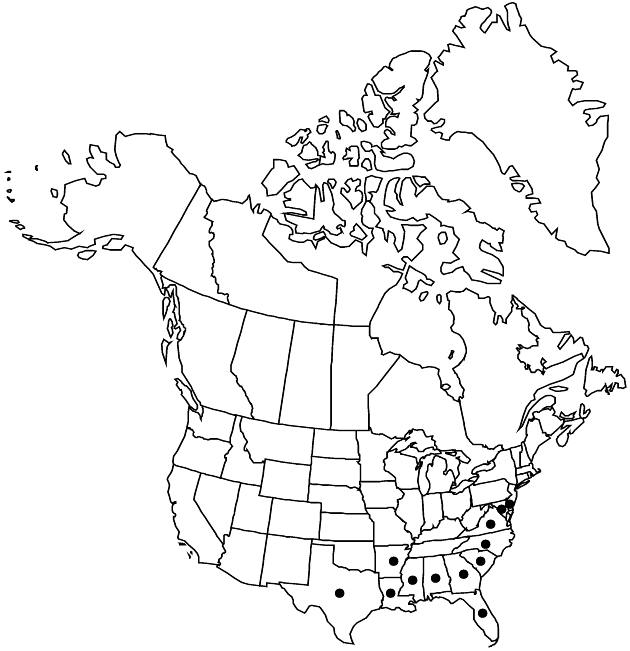Elephantopus nudatus
Proc. Amer. Acad. Arts 15: 47. 1880.
Endemic
Treatment appears in FNA Volume 19. Treatment on page 203.
Plants (1–)3–11+ dm. Leaves mostly basal at flowering; blades mostly oblanceolate to spatulate, sometimes elliptic, 7–15(–20+) cm × 20–35(–45+) mm (including petioles), both faces strigose or pilose to hirsute. Bracts rounded-deltate to lance-deltate, 6–15+ × 4–9+ mm. Inner phyllaries 6–7.5 mm, sparsely strigose or hispidulous with hairs 0.05–0.3(–0.5) mm. Cypselae 2.5–3 mm; pappi 3–4.5 mm. 2n = 22.
Phenology: Flowering Aug–Oct.
Habitat: Open or shaded, dry to wet places in pine forests and mixed forests, often on sandy soils
Elevation: 0–100 m
Distribution

Ala., Ark., Del., Fla., Ga., La., Md., Miss., N.C., S.C., Tex., Va.
Discussion
Selected References
None.
Lower Taxa
None.